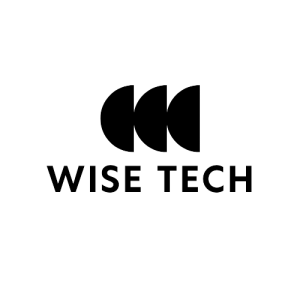Recruitment plays a crucial role in the success of any business. The ability to attract, identify, and hire top talent can significantly impact an organization’s performance and competitiveness. In this blog, we will explore the proven techniques and best practices that can help unlock the power of recruitment and enable you to hire the best candidates for your team. By implementing these strategies, you can enhance your recruitment efforts and bring in top talent that will drive your organization’s growth and success.
I. Understanding the Role of Recruitment in Business Success:
Effective recruitment is not merely a transactional process; it is a strategic investment in the future of your organization. A well-executed recruitment strategy can lead to improved productivity, higher employee engagement, and increased innovation. On the other hand, poor hiring decisions can result in wasted resources, reduced team morale, and hindered business growth. By recognizing the significance of hiring top talent, you can ensure a competitive edge in the market.
II. Identifying the Recruitment Needs and Setting Goals:
To unlock the power of recruitment, it is essential to clearly define your organization’s recruitment needs. This involves understanding the skills, experience, and qualities required for each position. By aligning your recruitment goals with your business objectives, you can ensure that the candidates you hire contribute to your organization’s growth and success. Set measurable goals such as the number of qualified candidates to be sourced, time-to-fill metrics, and diversity targets to track your recruitment progress.
III. Building a Strong Employer Brand:
A compelling employer brand plays a vital role in attracting top talent. Candidates are more likely to be attracted to organizations with a positive reputation and strong company culture. To build a strong employer brand, highlight your company’s unique values, mission, and benefits. Showcase employee testimonials and success stories to provide candidates with insights into the employee experience. Leverage online platforms, such as social media and company websites, to enhance your employer brand visibility and engage with potential candidates.
IV. Crafting Effective Job Descriptions:
Job descriptions are often the first point of contact for candidates. Well-crafted job descriptions not only attract qualified applicants but also help candidates understand the role and responsibilities. To optimize your job descriptions, ensure they are clear, concise, and include essential information such as required qualifications, responsibilities, and any unique selling points of the position or organization. Incorporate relevant keywords naturally to improve search engine visibility and attract the right candidates.
V. Leveraging Social Media for Recruitment:
Social media platforms have become valuable tools for recruitment. They provide access to a vast pool of potential candidates and allow for targeted outreach. Identify the platforms that are popular within your industry and engage with candidates through compelling content, job postings, and employee spotlights. Optimize your social media profiles and posts with relevant keywords to enhance searchability and attract top talent.
VI. Utilizing Applicant Tracking Systems (ATS):
Applicant Tracking Systems (ATS) streamline and automate the recruitment process. These systems help manage job postings, track candidate applications, and streamline communication. Implementing an ATS allows you to organize candidate data, track recruitment metrics, and improve overall efficiency. When choosing an ATS, consider your organization’s specific needs and ensure it integrates smoothly with your existing processes.
VII. Developing a Strategic Sourcing Plan:
Successful recruitment often requires a proactive approach to sourcing candidates. Develop a strategic sourcing plan that includes various channels such as job boards, professional networking platforms, employee referrals, and recruitment agencies. Additionally, consider building and maintaining talent pipelines by engaging with passive candidates and fostering relationships with potential hires before a specific role becomes available.
VIII. Conducting Effective Interviews and Assessments:
Structured interviews and assessments are crucial in evaluating candidates objectively and consistently. Develop interview guides that align with the position’s requirements and desired competencies. Use behavioral and situational questions to assess candidates’ skills, experiences, and cultural fit. Consider involving multiple interviewers to gain different perspectives and reduce bias. Additionally, incorporate skill-based assessments, such as practical tests or case studies, to evaluate candidates’ abilities accurately.
IX. Implementing a Comprehensive Onboarding Process:
A well-designed onboarding process sets the stage for new hires’ success and integration into the organization. Provide a structured orientation program that familiarizes employees with their roles, company policies, and organizational culture. Assign mentors or buddies to help new hires navigate their initial days. By ensuring a positive onboarding experience, you can increase employee retention and productivity.
X. Measuring and Improving Recruitment Performance:
To unlock the full potential of recruitment, it is essential to measure and analyze recruitment metrics. Track metrics such as time-to-fill, cost-per-hire, quality of hire, and diversity metrics to assess the effectiveness of your recruitment strategies. Analyze the data regularly to identify areas for improvement and make data-driven decisions to optimize your recruitment process continuously.
Takeaway
Unlocking the power of recruitment requires a strategic and holistic approach. By understanding the role of recruitment in business success, identifying recruitment needs, building a strong employer brand, crafting effective job descriptions, leveraging social media, utilizing applicant tracking systems, developing a strategic sourcing plan, conducting effective interviews and assessments, implementing a comprehensive onboarding process, and measuring recruitment performance, you can significantly enhance your ability to attract and hire top talent. Embrace these proven techniques and best practices to build a high-performing team that will drive your organization’s growth and success.













